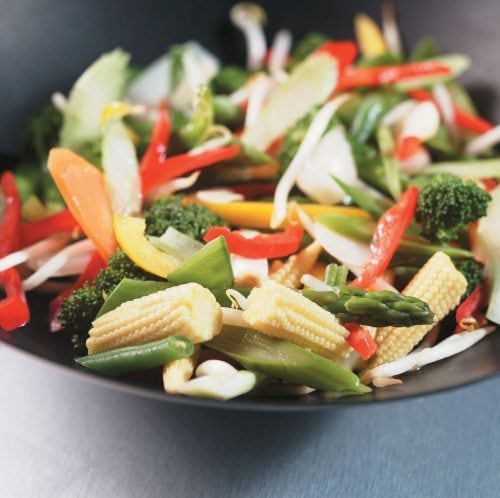
Advice on eating vegetarian – and saving money.
Meat makes up a large chunk of the weekly grocery spend in many households, not just for main meals but also in snacks and sandwiches. So from a purely cost-saving perspective, people who eat less meat are at an advantage.
I find it ironic that some of the healthiest and least expensive cuisines have been adopted as the most popular restaurant and takeaway trends, both here and overseas. Mexican, Indian, Greek and Turkish instantly spring to my mind. The reason these cuisines are so inexpensive to make at home is that many of the dishes are vegetarian.
Reducing or eliminating meat entirely from your diet can yield significant reductions in the weekly food bill. Many non-meat protein sources are incredibly cheap. They’re also healthy; as well as being high in fibre, most are low in fat and low GI as well. Foods like pulses and legumes, whole grains, tofu and nuts are all foods dietitians recommend many of us eat more of. Introducing one or two meatless days a week could save you $10-15 per week.
Eliminating meat entirely from the household diet is a much more serious undertaking and maintaining optimum nutrition takes planning, practice and even some support. Of particular concern for non-meat eaters is consuming sufficient quantities of protein, iron, omega-3 fats and B vitamins.
Just as there are unhealthy, overweight meat-eaters, there are unhealthy, overweight vegetarians. Relying too heavily on eggs and dairy products for protein is a common mistake among new or younger vegetarians, as is eating too limited a range of foods.
To successfully transition from meat most nights to a ‘less meat’ lifestyle, you will need to find new foods that you love, be prepared to experiment, and invest in some great recipes.
A sense of humour is essential as there will be disasters. There will also be critics. Laugh along with them, all the way to the bank!
Getting started
- Try substituting with a non-meat protein source in a familiar recipe. Use lentils instead of mince in bolognese sauce; marinate tofu and use instead of chicken in stir-fries; use vege sausages in a cassoulet; use roasted vegetables in frittatas.
- Choose whole grain breads, pastas and brown rice, and include oats, millet, quinoa and bulgar in breads, salads, baking and savoury dishes. Whole grains provide essential B vitamins.
- Add molasses to baking, muesli, porridge and smoothies for an iron boost.
- Include fresh fruit and vegetables with every meal. The vitamin C in fresh produce assists in the absorption of non-haem (non-meat) iron. Dress salads or stir-fries with a squeeze of orange, lemon or lime, finish with fresh fruit. Caffeine and tannins inhibit the absorption of iron so avoid drinking tea or coffee for 30 minutes before and after meals.
Tips for meatless meals
Try to include a meal based around each of the following protein sources every week:
- Nuts – nut roast, burgers or loaves. Nuts are expensive but relative to meat the quantities used are still very economical!
- Tofu – burgers, dips, curries, stir-fries. Buy in blocks from Asian food stores and keep refrigerated.
- Beans or lentils – use in chilli, nachos, hummus, croquettes, bean mash, quesadillas, refried beans, curries, lentil soups.
- Dairy – cheesy soufflés’, quiche, fritters, vegetable lasagne or pizza.
Search the recipes section of this website for loads of vegetarian dishes for all occasions.
www.healthyfood.com










